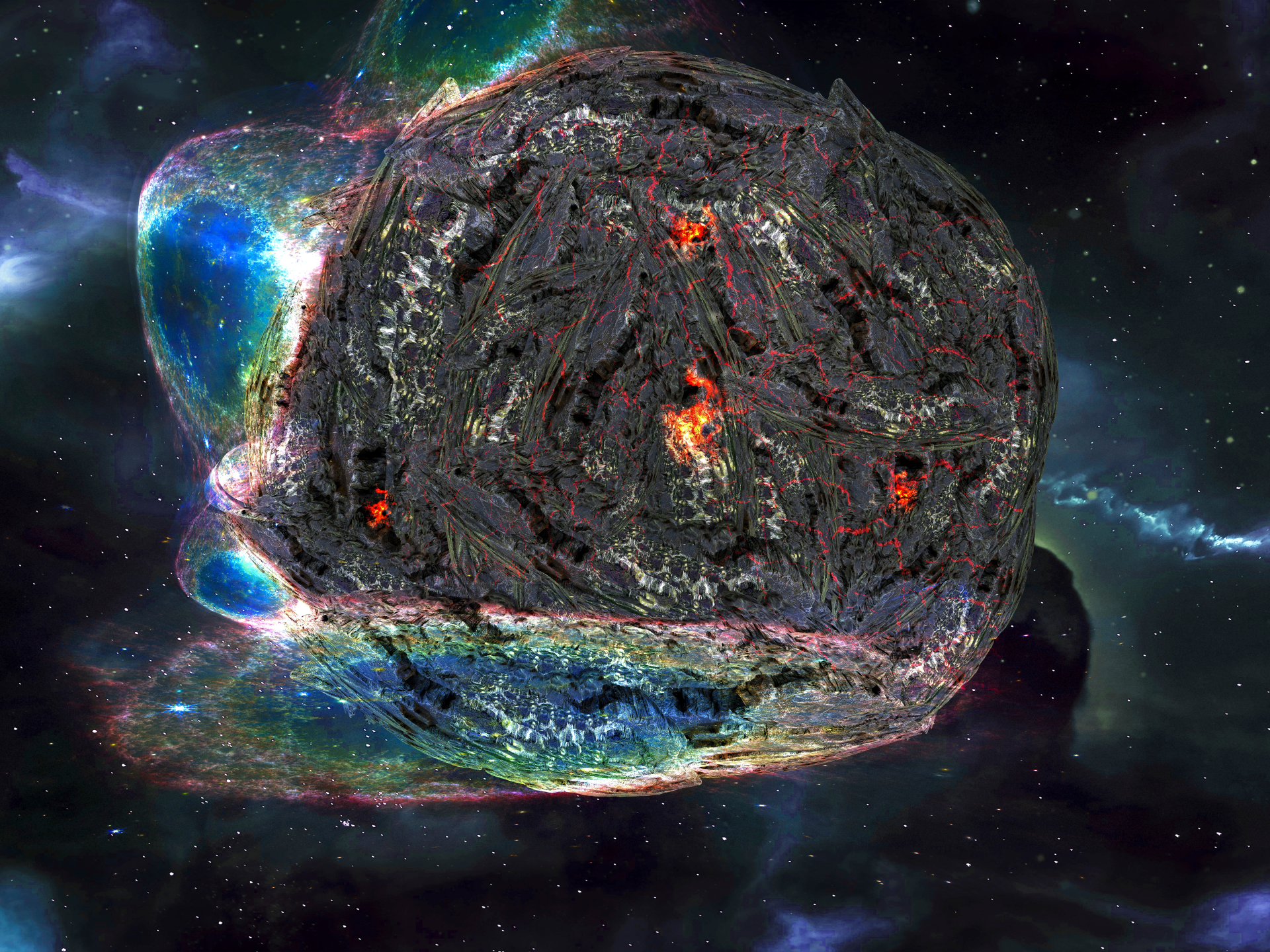Are internet rumours of a comet hurtling towards Earth true? | Space News
Rumours across social media platforms that a huge comet is on a collision course with Earth have been circulating, with some users describing it as a major threat to humanity.
Others are debating how the comet – known as 3I/ATLAS and detected by NASA’s ATLAS telescope on July 1 – might be diverted from the Earth. Some have even gone so far as to highlight “news” of military movements and an international coordination to counter the comet before impact, prompting further alarm.
So is there any truth to these rumours and what do we know for sure?
When and how did rumours about the comet start?
Rumours began spreading after the New York Post published a story on September 29 under the headline: “‘Massive’ comet hurtling toward us is larger than previously thought, could be alien tech, scientist says: ‘It could change everything for us’.”
Users on X (formerly Twitter) circulated screenshots of the article to support their claims. One account, under the name Steven Greenstreet, wrote: “Scientists say a massive alien spaceship is hurtling towards Earth. Why aren’t more people talking about this?”
Scientists say a massive alien spaceship is hurtling towards Earth. Why aren’t more people talking about this?!?! 😱😱😱 pic.twitter.com/Q2NvVdcXa7
— Steven Greenstreet 🐷 (@MiddleOfMayhem) September 29, 2025
Another account called Dr Disclosure reposted the story, adding: “This is why all the generals are gathering!” – a reference to a September 30 meeting of US military leaders chaired by Defense Secretary Pete Hegseth. That post racked up more than half a million views.
This is why all the generals are gathering!!!!!! https://t.co/qzeeUAiR2P
— Dr. Disclosure (@Docneuroeo) September 29, 2025
Meanwhile, an account under the name Richard Roeper shared his concerns: “A massive comet is reportedly hurtling toward Earth at 130,000 mph! Can we stop it? I’m told there are two missions in the works – one involving the specially selected “Messiah Crew,” and one utilizing two squads, known as the Freedom Team and the Independence Team. We got this.”
A massive comet is reportedly hurtling toward Earth at 130,000 mph! Can we stop it? I’m told there are two missions in the works–one involving the specially selected “Messiah Crew,” and one utilizing two squads, known as the Freedom Team and the Independence Team. We got this. pic.twitter.com/dsbgW0giLD
— Richard Roeper (@RichardERoeper) September 29, 2025
Why do some people claim it’s an alien aircraft?
Speculation escalated, with some accounts suggesting the object was not a comet at all but in fact a spacecraft heading towards Earth.
An account under the name Lord Bebo shared statements falsely attributed to US physicist Michio Kaku, claiming the object was on the way “to conduct a reconnaissance mission, possibly with hostile intent”. The post, accompanied by an edited screenshot of a television interview with Kaku and the caption, “It might be an ALIEN probe sent to Earth” garnered more than 290,000 views and dozens of comments.
☄️ Comet stirs debate among astrophysicists & they call for urgent international attention on interstellar object 3I/ATLAS
Physicist Michio Kaku: its acceleration cannot be explained by conventional causes, and it’s approaching Earth CLOSER than expected
Professor of natural… pic.twitter.com/zEt0NO34bm
— Lord Bebo (@MyLordBebo) October 1, 2025
Similarly, another account called Astronomy Vibes suggested: “While most scientists agree it’s likely a strange comet, a few bold voices suggest it might be something more – maybe even an engineered probe from another civilization.” No evidence was provided.
🚨 Breaking Cosmic News!
Scientists have spotted a 7-mile-wide interstellar visitor — the largest of its kind ever seen — racing through our solar system. Known as 3I/ATLAS, this giant comet isn’t from around here… it comes from deep interstellar space! 🌌What’s shocking is… pic.twitter.com/DDxOJPDlUg
— Astronomy Vibes (@AstronomyVibes) October 1, 2025
So, what are the facts?
Al Jazeera’s fact-checking agency, SANAD, investigated the claims about the comet known as 3I/ATLAS, an interstellar object, to determine whether it really poses any real threat to Earth or could even be a hostile probe.
The comet was in fact detected by NASA’s ATLAS telescope on July 1, 2025. NASA, which describes it as having “a teardrop-shaped cocoon of dust coming off its solid, icy nucleus”, confirmed that it poses no danger to Earth. It noted that the closest it has come to the Earth was about 270 million kilometres (167.8 million miles) on July 21.
The European Space Agency (ESA) also confirmed that the comet poses no threat to Earth or to any other planet, explaining that its closest distance was more than 2.5 times that between Earth and the Sun.
According to NASA, the comet will reach its closest approach to the Sun on October 30, 2025. At that point, it will be about 210 million km (130.5 million miles) from the sun, just inside the orbit of Mars.
This is a significant comet, however. According to the Hubble Space Telescope, it is travelling at about 210,000 kilometres per hour (130,500 miles per hour) – the fastest speed ever recorded for a “visitor” to our solar system.
🆕 Hubble has caught an interstellar interloper — comet 3I/ATLAS!
Read more: https://t.co/fSIpjDYeu1 or in 🧵👇 pic.twitter.com/6dUojFwdnW
— HUBBLE (@HUBBLE_space) August 7, 2025
NASA said the comet presents a rare opportunity for scientists to study an interstellar “visitor” as it passes through the solar system.
“Hubble’s continuing observations allow astronomers to more accurately estimate the size of the comet’s nucleus,” the agency said in a statement. “Observations as of August 20, 2025, indicate that the upper limit on its diameter is 3.5 miles (5.6 km), though it could be as small as 1,444ft (440 metres) across.”
Comet 3I/ATLAS doesn’t pose a threat to Earth, but it does provide NASA scientists and spacecraft with a rare opportunity to study an interstellar comet as it passes through our solar system. ☄ https://t.co/B1MkBRZuT4 pic.twitter.com/wAmBUEte8l
— NASA Solar System (@NASASolarSystem) September 30, 2025
As for the quotes attributed to physicist Michio Kaku, SANAD found no evidence supporting them. The image circulating online was taken from an older interview with US outlet Nation News on February 20, 2025 – months before the discovery of 3I/ATLAS.
Will a huge “city-killer” asteroid collide with Earth in 2032? The odds don’t rule it out. So what can we do about it? I appeared on @NewsNation‘s On Balance with @LelandVittert to discuss the possibilities. #asteroid #asteroidimpact pic.twitter.com/ZHYi982SEi
— Dr. Michio Kaku (@michiokaku) February 20, 2025




